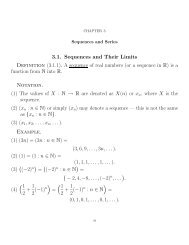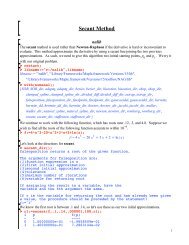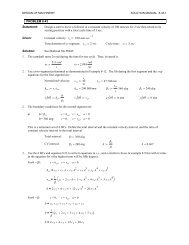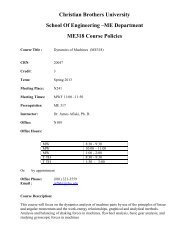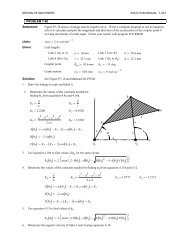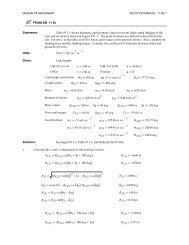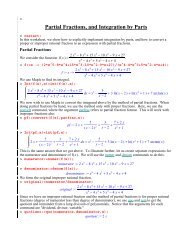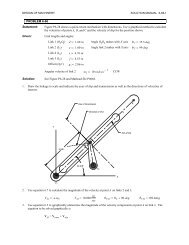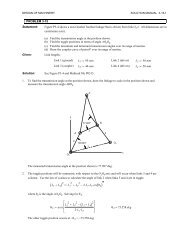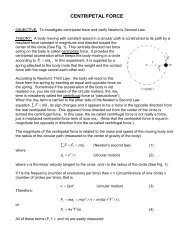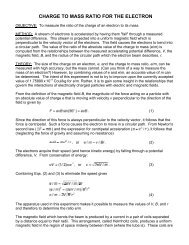Problem (Page 88). In a group of nine coins, eight weigh the same ...
Problem (Page 88). In a group of nine coins, eight weigh the same ...
Problem (Page 88). In a group of nine coins, eight weigh the same ...
Create successful ePaper yourself
Turn your PDF publications into a flip-book with our unique Google optimized e-Paper software.
44 3. WHOLE NUMBERS: OPERATIONS AND PROPERTIESDivision – two conceptual ways <strong>of</strong> viewing:Sharing (partative) division – breaking a <strong>group</strong> <strong>of</strong> objects into a specified number<strong>of</strong> <strong>group</strong>s (at <strong>the</strong> beginning, <strong>the</strong> number <strong>of</strong> <strong>group</strong>s is known, but <strong>the</strong> <strong>group</strong>size isn’t).Measurement division – breaking a <strong>group</strong> <strong>of</strong> objects into a number <strong>of</strong> <strong>group</strong>s<strong>of</strong> a specified size (at <strong>the</strong> beginning, <strong>the</strong> size <strong>of</strong> each <strong>group</strong> is known, but <strong>the</strong>number <strong>of</strong> <strong>group</strong>s isn’t)Missing factor approachDefinition.If a and b are any whole numbers with b 6= 0, <strong>the</strong>n a ÷ b = c if and only ifa = bc for some whole number c.a is called <strong>the</strong> dividend, b is called <strong>the</strong> divisor, and c is called <strong>the</strong> quotient.



